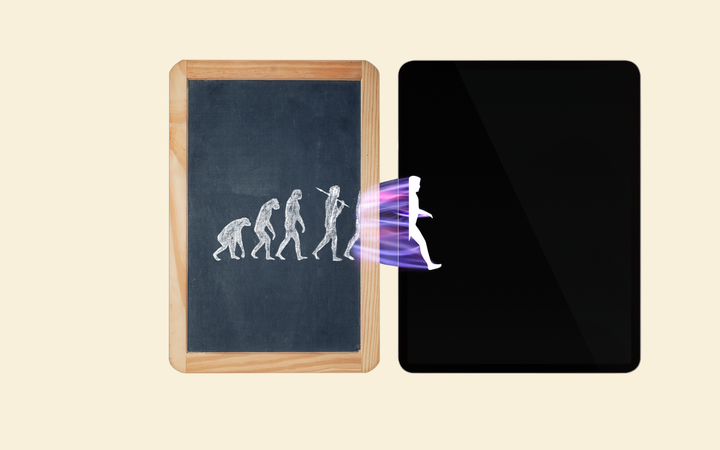The Evolution of Influence

The concept of influence has been a constant throughout human history. From the earliest days of humankind, people have sought to inspire, communicate, and shape the behaviors of others. Influence, in its most basic form, is about creating impact—whether through art, storytelling, or action. While today’s influencers wield power on social media platforms like Instagram, TikTok, and YouTube, the roots of influence go back thousands of years.
From the cave paintings of the Stone Age to modern-day AI influencers like Lil Miquela, the evolution of influence highlights how humans adapt to new tools and technology to communicate, persuade, and inspire.
The Origins of Influence: The Stone Age
The story of influence begins in prehistoric times, when early humans left marks on cave walls that transcended their immediate audience. These cave paintings, found in places like Lascaux in France, date back over 17,000 years and depict hunting scenes, animals, and rituals. While their exact purpose remains speculative, historians believe they were more than simple decorations—they served as tools to communicate knowledge, reinforce cultural practices, or inspire others within their communities.
For example:
- Storytelling through Symbols: A successful hunt might be depicted to inspire courage and strategy in younger generations.
- Social Status: Skilled hunters or leaders might have their deeds symbolically represented to showcase influence over their tribe.
Even in its earliest form, influence was about communication and the ability to shape collective thought—a timeless purpose that still holds true today.
Ancient Civilizations: Royalty, Philosophers, and Religion
As human societies developed, influence became more centralized, often residing with individuals in positions of power or knowledge.
- Royalty and Leaders:
- Egyptian pharaohs wore elaborate jewelry and adorned themselves with symbols of power to reinforce their divine authority.
- Their influence extended beyond governance; they set fashion and cultural trends that subjects emulated.
- Philosophers and Intellectuals:
- Greek philosophers such as Socrates, Plato, and Aristotle shaped entire civilizations with their teachings on ethics, politics, and society.
- Their ideas influenced leaders, artists, and educators, leaving a cultural legacy that endures to this day.
- Religious Influence:
- Religious leaders in ancient civilizations became powerful influencers by connecting spiritual beliefs to societal behavior. For instance, texts like the Bible, Torah, and Vedas influenced how people lived, worked, and interacted.
These examples demonstrate how early influencers, from kings to philosophers, relied on their perceived authority, wisdom, or spiritual connection to create change and inspire trust within their societies.
The Printing Revolution: Influence at Scale
The invention of the printing press by Johannes Gutenberg in the 15th century revolutionized influence by enabling mass communication. Before this, influence was largely limited to word of mouth or handwritten manuscripts, accessible only to the elite. With the printing press:
- Books, pamphlets, and newspapers became tools to spread ideas widely and quickly.
- Movements like the Protestant Reformation were fueled by mass printing, such as Martin Luther’s 95 Theses, which inspired widespread religious and social change.
For the first time, individuals could influence entire nations and generations, democratizing access to ideas and challenging existing power structures.
The Industrial Revolution: Celebrity Influence Takes Center Stage
The Industrial Revolution introduced mass production and advertising, giving rise to celebrity endorsements as a form of influence. As products became more accessible, brands sought recognizable figures to connect with their audiences.
- Royal Endorsements: British potter Josiah Wedgwood used an endorsement from Queen Charlotte in 1765 to position his pottery as luxurious and prestigious, naming it “Queensware.”
- Hollywood’s Golden Age: Celebrities like Charlie Chaplin and Marilyn Monroe endorsed products ranging from cosmetics to cigarettes, making brands desirable through association.
The concept of celebrity influence laid the groundwork for modern influencer marketing by connecting aspirational lifestyles with consumer goods.
The Early 20th Century: Fictional Characters as Influencers
During the 20th century, brands introduced fictional characters to influence consumer behavior. These “influencers” created emotional connections with audiences:
- Coca-Cola’s Santa Claus: In the 1930s, Coca-Cola redefined the modern image of Santa Claus to promote holiday cheer and drive sales during Christmas.
- Quaker Oats’ “Mikey”: A fictional picky eater who loved Life cereal resonated with parents, influencing their buying decisions.
These characters showcased the power of storytelling and relatability in shaping consumer choices—an essential principle that continues in influencer marketing today.
The Internet Revolution: Influence Goes Digital
The late 20th century brought the internet, marking a shift in how influence spread. With the rise of blogs and online communities, everyday individuals could share opinions and gain followings.
- Blogs and Forums: Early “mommy bloggers” influenced parenting trends, while tech bloggers reviewed products and shaped purchasing decisions.
- Early Social Platforms: MySpace and Friendster allowed users to share content, paving the way for influencer culture.
This democratization of influence disrupted traditional advertising and gave rise to a new era where authenticity and relatability became currency.
The Social Media Explosion: The Modern Influencer
The launch of platforms like Facebook, Instagram, YouTube, and Twitter transformed influence. Now, anyone with compelling content could become an influencer. Early digital influencers like PewDiePie (gaming), Zoella (beauty), and Huda Kattan (makeup) demonstrated how niche expertise could attract massive audiences.
Brands quickly realized the power of partnering with these influencers to connect with targeted demographics in authentic ways.
Short-Form Content: TikTok and the New Age of Influence
The introduction of TikTok, Instagram Reels, and YouTube Shorts shortened attention spans but amplified influence. Influencers like Charli D’Amelio, who skyrocketed to fame with dance videos, highlighted how short, engaging content could drive cultural trends and brand success.
AI and Virtual Influencers: A New Frontier
The newest evolution of influence comes in the form of virtual influencers like Lil Miquela, a computer-generated persona with millions of followers. While controversial, AI influencers allow brands to control messaging, but critics argue they lack the authenticity of human influencers.
The Role of Influence in Activism
Modern influencers now use their platforms for social causes:
- Greta Thunberg: Inspiring climate change activism globally.
- Social justice movements leveraging influencers to spread awareness and mobilize communities.
Conclusion
From the cave paintings of the Stone Age to virtual influencers of the digital age, influence has continually evolved alongside human society and technology. While tools and platforms have changed, the core principle remains the same: influence shapes how we think, behave, and connect. As we move toward a future of AI, the Metaverse, and decentralized platforms, authenticity and trust will remain the cornerstone of meaningful influence.

